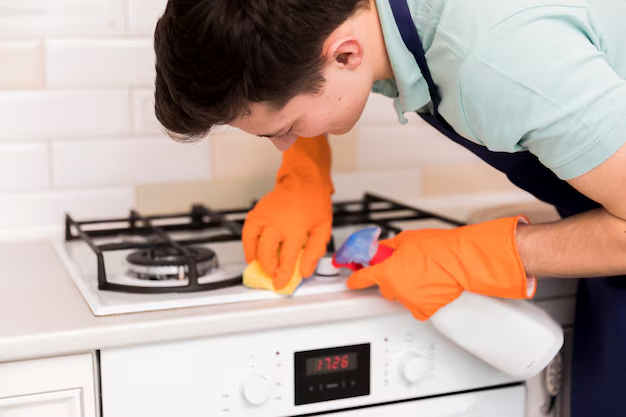Keeping It Cool: Mastering Your Refrigerator's Temperature Settings
Are you constantly guessing if your fridge is at the right temperature or frustrated when items spoil unexpectedly? Adjusting your refrigerator’s temperature correctly is the key to ensuring your food stays fresh and safe to eat. By the time you finish reading this guide, you’ll be empowered with the knowledge to manage your fridge settings like a pro, ensuring your perishables last longer while conserving energy.
📈 Why Refrigerator Temperature Matters
To store food safely, your refrigerator must be at the right temperature. This isn't just about keeping your groceries crisp and tasty—it's also about food safety. A fridge that's too warm can lead to spoilage, while one that's too cold could waste energy or freeze items unnecessarily.
Health and Safety
- Preventing Bacteria Growth: Pathogens like Salmonella and E. coli thrive in warmer environments. Keeping your fridge at the right temperature minimizes their growth.
- Extending Shelf Life: Proper refrigeration slows down the natural decay process, keeping your fruits, veggies, and meats fresher for longer.
Energy Efficiency
Adjusting to the optimal temperature can also reduce energy consumption. A small decrease in temperature could significantly hike up your energy bills over time.
📉 Finding the Ideal Refrigerator Temperature
The general consensus among experts is to keep your refrigerator at a temperature of around 37°F (3°C) and your freezer at 0°F (-18°C). However, variations can occur depending on your refrigerator model and usage patterns.
Considerations for Optimal Settings
- Climate and Season: In hotter climates or during summer months, you might need to adjust settings slightly cooler to compensate for the increased ambient temperature.
- Fridge Space and Load: A packed fridge might benefit from cooler settings to ensure consistent cooling throughout. Conversely, a nearly empty fridge could be set slightly warmer.
🛠️ How to Adjust Your Refrigerator Temperature
Adjusting your refrigerator settings is usually a straightforward task. Here’s a step-by-step guide that covers most standard models:
1. Identify Your Control System
Refrigerators typically have one of two control systems:
- Dial Control: Often labeled from 1 to 5 (or 7), where higher numbers indicate cooler temperatures.
- Digital Control: Allows you to set specific temperatures using a digital panel.
2. Adjust the Settings
For Dial Control:
- Moderate Increase/Decrease: Turn the dial by one number and give it 24 hours to stabilize before rechecking.
For Digital Control:
- Precise Adjustment: Directly input your desired temperature and monitor the results over the next day.
3. Check the Temperature
Invest in an appliance thermometer to verify the settings. Place it in a glass of water in the center of the fridge overnight for an accurate reading.
4. Monitor After Adjustments
After changes, monitor your fridge's temperature daily for a week to ensure that the new setting works effectively.
🍎 Factors Affecting Refrigerator Temperature Settings
Placement of Items
Proper placement of items can enhance airflow and cooling efficiency. Avoid overcrowding, and make sure air vents aren't blocked by large containers or leftovers.
Frequency of Door Opening
Frequent opening and closing let warm air enter, affecting internal temperatures. Consider minimizing door time by organizing your fridge efficiently.
Ambient Temperature
Refrigerators in garages or unheated areas might need seasonal adjustments due to external temperature fluctuations.
Maintenance and Upkeep
Regularly clean the coils and inspect the door seals to ensure optimal performance. A well-maintained fridge not only consumes less energy but also maintains more consistent temperatures.
❄️ Advanced Tips for Specialized Needs
Storing Specific Items
- Produce: Keep fruits and vegetables in designated crisper drawers to maintain different levels of humidity.
- Dairy and Eggs: Store on middle shelves away from the door, where temperatures are more stable.
- Raw Meat: Place on lower shelves to prevent cross-contamination from potential leaks.
Seasonal Adjustments
With varying household activities and seasonal events, you might need to adjust your fridge temperature when you pack more meals or entertain guests often.
Using Smart Technology
Modern refrigerators sometimes come equipped with smart technology, allowing you to monitor and adjust settings via smartphone apps for added convenience and precision.
📝 Quick Summary: Achieving Perfect Refrigerator Temperatures
Here's a concise-by-point list to quickly reference when adjusting or setting your refrigerator's temperature:
- Ideal Temperature: 37°F (3°C) for the fridge, 0°F (-18°C) for the freezer.
- Assess Settings: Regularly check and adjust settings based on climate and fridge load.
- Improve Efficiency: Keep vents clear, minimize door time, and check seals.
- Verification: Use a thermometer to validate internal temperatures.
- Seasonal Prep: Make necessary adjustments based on ambient conditions.
Remember, a well-regulated refrigerator ensures the freshness, safety, and longevity of your groceries while conserving energy. Whether you're managing meals for a growing family, stashing seasonal produce, or just stocking up for the week, understanding and optimizing your refrigerator’s settings can have a big impact on your kitchen efficiency.
By following these guidelines and paying attention to your fridge’s behavior, you’ll not only become adept at food storage but also foster an environment that supports a healthier, more sustainable lifestyle. Happy cooling! 🌡️
